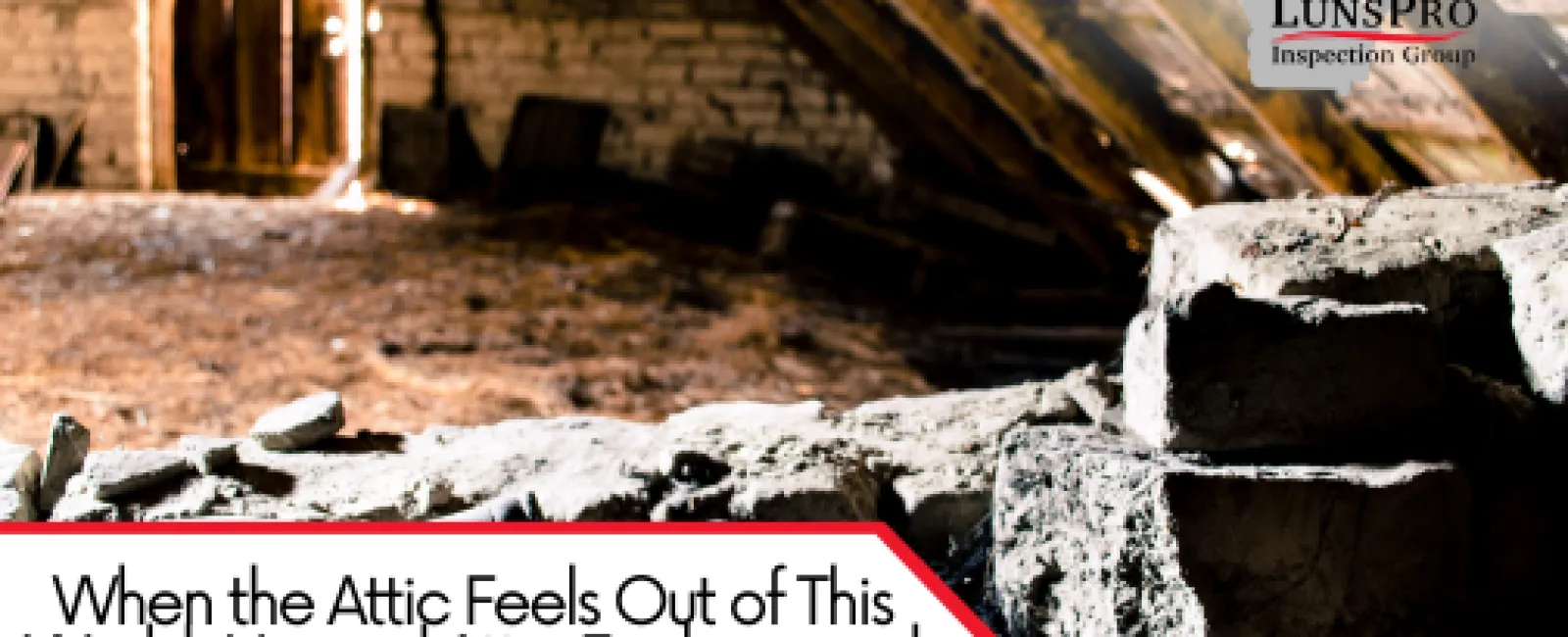An attic is one of the most overlooked spaces in a home. For many homeowners, it's simply a storage area for holiday decorations, old furniture, and boxes of keepsakes. However, home inspectors know that attics can tell a very different story—one that reveals critical details about a property's condition.
Sometimes, attic inspections uncover scenes that look like they belong in a science fiction movie: strange insulation patterns, unusual building materials, or mysterious residue and wiring. While these odd sights may be fascinating, they are often signs of issues that need attention.
This article explores the types of unusual attic findings that inspectors may encounter, what these signs could mean, and why attic inspections are a vital part of maintaining a safe and healthy home.
Why Attic Inspections Matter
The attic plays a critical role in a home's structural integrity, energy efficiency, and indoor air quality. It is where key elements—such as insulation, ventilation, electrical wiring, and the roof structure—intersect.
Without routine inspections, problems in the attic can go unnoticed for years. This can lead to costly repairs, reduced energy efficiency, and even health hazards.
Key purposes of an attic inspection include:
-
Checking for proper insulation coverage and condition
-
Ensuring ventilation is adequate to prevent moisture buildup
-
Identifying roof leaks or water intrusion
-
Examining structural components for damage or deterioration
-
Assessing for pest infestations
-
Verifying that electrical systems are safe and up to code
Strange or "Alien" Attic Conditions: What They Could Mean
While some attic issues are straightforward, others can be unusual enough to catch anyone off guard. Below are some odd conditions that may appear to be "out of this world" but have real-world explanations.
1. Unusual or Patchy Insulation
Sometimes insulation in the attic looks lumpy, discolored, or oddly arranged—as if it's been disturbed. In extreme cases, homeowners might find bright-colored materials or reflective foils that seem unusual.
Possible causes:
-
Pest activity: Rodents and birds often burrow into insulation, leaving uneven areas or trails.
-
Water damage: Leaks can cause insulation to clump, compress, or change color.
-
Past retrofits: Contractors may have added or replaced insulation using different materials.
Why it matters:
Uneven or damaged insulation reduces a home's energy efficiency and can lead to higher utility bills. Wet insulation can also foster mold growth.
2. Shiny or Reflective Surfaces
Sometimes an attic will have large sheets of foil or shiny barriers stapled to rafters, making the space look futuristic.
Possible causes:
-
Radiant barriers: These reflective materials are installed to reduce heat gain in warmer climates.
-
Vapor barriers: Certain building designs use reflective vapor barriers to control moisture movement.
Why it matters:
While radiant barriers can improve energy efficiency, improper installation can cause ventilation issues. If these materials appear loose or damaged, they may need repair to remain effective.
3. Mysterious Residue or Staining
Inspectors sometimes encounter dark, powdery residue, strange discolorations, or even crystallized substances on attic surfaces.
Possible causes:
-
Mold or mildew growth due to high humidity or roof leaks.
-
Soot or smoke staining from past chimney or fireplace use.
-
Efflorescence (a white, powdery deposit) from moisture movement through masonry.
Why it matters:
Residues often indicate moisture problems, ventilation issues, or previous fire damage. Addressing the underlying cause is critical to prevent recurrence.
4. Odd Wiring and Fixtures
From tangled wires to unusual light fixtures or unprotected splices, attic electrical setups can sometimes appear unconventional.
Possible causes:
-
DIY wiring: Homeowners may have installed lighting or outlets without following electrical codes.
-
Old knob-and-tube wiring: This outdated system can still be found in older homes.
-
Disconnected systems: Abandoned wiring from old HVAC units or antennas may remain in place.
Why it matters:
Unsafe wiring can pose a fire hazard. Electrical issues should always be evaluated and corrected by a licensed electrician.
5. Strange Sounds or Signs of Movement
Though not always visible, attics can sometimes be home to noises or droppings that point to uninvited guests.
Possible causes:
-
Rodents, squirrels, or raccoons nesting in insulation.
-
Birds or bats gaining entry through damaged soffits or vents.
-
Insects such as wasps building nests in corners.
Why it matters:
Pests can cause damage to insulation, wiring, and wood structures. They can also introduce health hazards through droppings and contamination.
Common Problems Behind Unusual Attic Conditions
Even when attic conditions look strange, they often stem from a handful of root causes:
-
Moisture Intrusion - Leaks from the roof or condensation due to poor ventilation can create staining, mold, and insulation damage.
-
Inadequate Ventilation - Without proper airflow, attics can trap heat and moisture, leading to structural and indoor air quality problems.
-
Improper Repairs - Unpermitted or low-quality work in the attic can create safety hazards.
-
Aging Materials - Old insulation, wiring, and structural components can deteriorate and look unusual over time.
-
Animal Activity - Nesting and foraging behaviors can rearrange insulation and leave behind damage.
The Role of Ventilation in Preventing Strange Attic Problems
One of the most common reasons for unusual attic conditions is improper ventilation. Attics require a balance of intake and exhaust airflow to regulate temperature and humidity. Without this balance:
-
Heat can build up in summer, damaging roofing materials.
-
Moisture can condense in winter, leading to mold and rot.
-
Insulation performance can be compromised.
A professional inspection can determine if ventilation systems—such as soffit vents, ridge vents, or gable vents—are functioning correctly.
Preventing and Addressing Attic Issues
Proactive maintenance and inspections can keep attic problems from escalating. Here are a few best practices:
-
Schedule regular inspections: Annual or biannual checks can catch small issues before they grow.
-
Maintain roof integrity: Keeping the roof in good condition prevents leaks and moisture intrusion.
-
Seal entry points: Ensure that vents, soffits, and eaves are intact to keep pests out.
-
Upgrade insulation: Replace old or damaged insulation with materials suited to the climate.
-
Ensure safe electrical systems: Have wiring inspected and updated if necessary.
Why Professional Inspections Are Essential
While homeowners can check their attics for obvious issues, a professional home inspector brings specialized tools, training, and experience. Inspectors can:
-
Detect subtle signs of water damage
-
Identify unsafe wiring
-
Recognize outdated or ineffective insulation
-
Spot ventilation imbalances
-
Document findings for repair planning
Professional attic inspections are especially important during real estate transactions, but they also benefit long-term homeowners who want to protect their investment.
Attics may not be a daily point of focus for most homeowners, but they can hold critical clues about the health of an entire property. From strange insulation patterns to reflective barriers and mysterious residues, unusual attic conditions may seem bizarre—but they often have practical explanations and important implications.
Whether these issues are caused by pests, moisture, outdated materials, or questionable past repairs, addressing them promptly can protect structural integrity, improve energy efficiency, and safeguard indoor air quality.
A thorough attic inspection is more than just a quick glance at stored belongings—it's a deep dive into the hidden systems that keep a home safe, comfortable, and efficient. Even if the scene looks like something from another planet, the right professional can translate those clues into actionable solutions.

